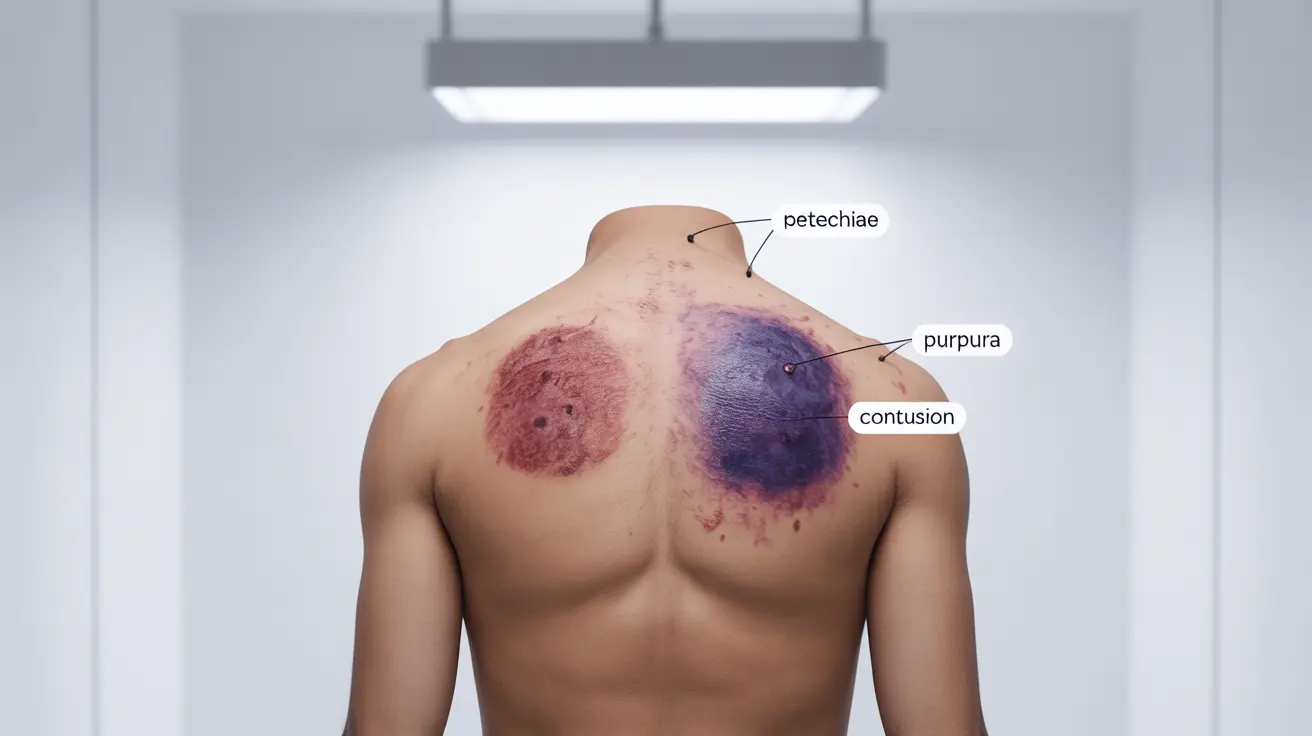While most bruises are harmless and heal on their own, certain types of bruises can signal serious underlying health conditions that require immediate medical attention. Understanding how to identify dangerous types of bruises and knowing when to seek professional help can be crucial for your health and safety.
This comprehensive guide will help you distinguish between normal bruising and potentially dangerous bruises, explain proper treatment methods, and outline clear warning signs that warrant medical evaluation.
Warning Signs of Dangerous Bruises
Certain characteristics can help you identify potentially dangerous bruises that require medical attention:
- Bruises that appear without any known injury or trauma
- Large bruises that develop very quickly
- Bruises that are accompanied by severe pain or swelling
- Bruising that occurs in unusual locations
- Bruises that don't show signs of healing after two weeks
Location-Specific Concerns
The location of a bruise can indicate its potential severity. Bruising in these areas should be evaluated promptly:
- Head or face, especially around the eyes
- Abdomen or chest
- Spine or lower back
- Joints or extremities with limited mobility
Understanding Different Types of Dangerous Bruises
Petechiae
These tiny, round, purple spots occur when small blood vessels break beneath the skin. When petechiae appear suddenly or spread quickly, they may indicate:
- Blood clotting disorders
- Viral or bacterial infections
- Certain medications' side effects
- More serious underlying conditions
Purpura
Larger than petechiae, purpura are purple-colored patches that can indicate:
- Blood platelet disorders
- Blood vessel inflammation
- Certain autoimmune conditions
- Side effects of blood-thinning medications
First Aid and Home Treatment
For non-emergency bruising, follow these initial treatment steps:
- Apply ice immediately for 15-20 minutes at a time
- Elevate the affected area when possible
- Rest and avoid putting pressure on the bruise
- Use compression if recommended by a healthcare provider
Safe Pain Management
When managing bruise-related pain:
- Use acetaminophen instead of aspirin or ibuprofen
- Apply cold therapy for the first 48 hours
- Switch to warm compresses after 48 hours
- Consider arnica gel if approved by your healthcare provider
When to Seek Emergency Care
Seek immediate medical attention if you experience:
- Severe pain or swelling
- Difficulty moving a joint
- Signs of infection (warmth, redness, fever)
- Bruising after starting new medications
- Multiple unexplained bruises
Frequently Asked Questions
What are the signs that a bruise might be dangerous or indicate a serious medical problem?
Signs of dangerous bruising include: unexplained bruises, bruises that appear without injury, rapidly spreading bruises, severe pain or swelling, bruises that don't heal within two weeks, and bruising accompanied by fever or illness symptoms.
How should I treat a bruised face at home during the first 36 hours?
Apply ice packs for 15-20 minutes every 1-2 hours, keep your head elevated, avoid touching or pressing the bruised area, use acetaminophen for pain relief, and avoid applying makeup to allow the area to heal properly.
When should I seek medical attention for frequent, large, or unexplained bruises?
Seek medical attention if you have bruises that appear without injury, multiple unexplained bruises, bruises that don't heal, severe pain or swelling, or if you're taking blood-thinning medications and notice increased bruising.
Can certain types of bruises, like purpura or petechiae, signal an underlying health condition?
Yes, both purpura and petechiae can indicate serious conditions such as blood disorders, autoimmune diseases, or infections. If you notice these types of bruises, especially if they appear suddenly or spread, consult a healthcare provider promptly.
What are safe pain relief options to use when managing a painful bruise without making it worse?
Acetaminophen is the safest pain relief medication for bruises, as it doesn't increase bleeding risk. Avoid aspirin and NSAIDs initially. Cold therapy, elevation, and gentle compression can also help manage pain without complications.




